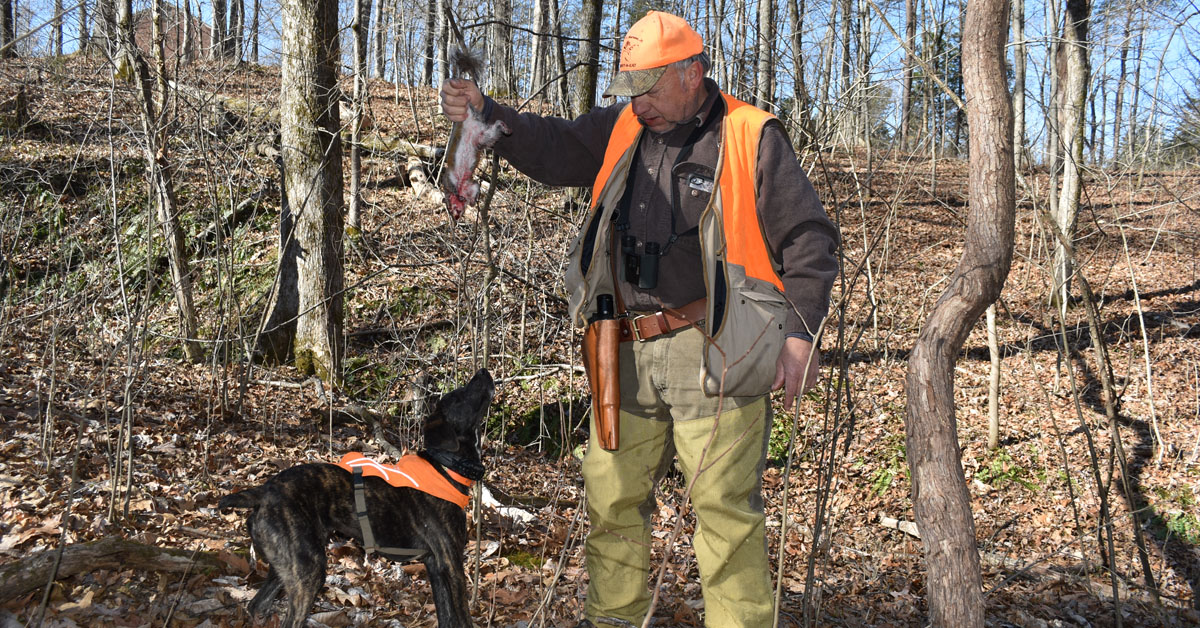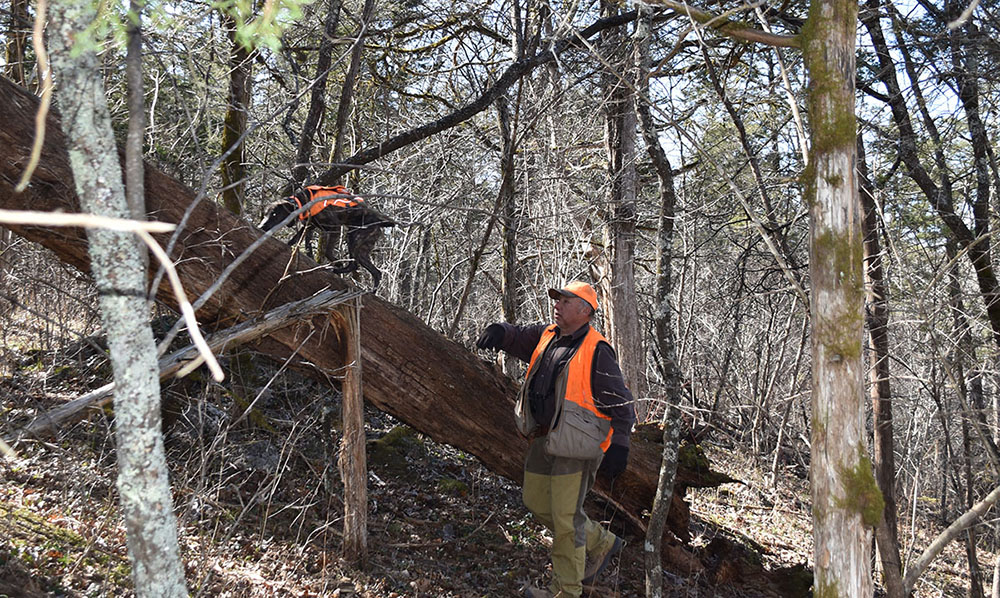
Craig Vaughn and Rosie exult in a successful hunt in Botetourt County.
By Bruce Ingram
Photos by Bruce Ingram
Craig Vaughn, a 65-year-old retired fireman from Chesterfield County, is a squirrel dog enthusiast—reveling in every aspect of the sport from its history to training a canine to hunting with one. It’s well known, of course, that every pooch on the planet is descended from wolves, but what Vaughn finds fascinating is that so many cultures used dogs for hunting.
“The people who came to America from Europe and Asia often brought their hunting dogs with them, and the Native Americans were using dogs to hunt, too,” he says. “As time passed, the dogs that were brought here were trained to hunt for bear, birds, deer, and squirrels. Over the decades, the big debate in Virginia has been whether feists or mountain curs make the better squirrel dog.
“I side with the cur group. Feists are good dogs of course, but as their name suggests, they are rather feisty. I’ve seen several of them that fought with their owners over a squirrel that had been shot—they just believe it’s theirs. My mountain cur Rosie wants to please me beyond all else. She behaves well, is great with kids, and lives to hunt with me.”
Vaughn says he bought the now 2 ½-year-old Rosie when she was six weeks old, which is standard. A fortnight later, the former fireman began dragging a silvertail hide around the yard and encouraging Rosie to play with it. A few weeks later, Vaughn began the next stage in the training, tying a hide to a tree limb and dangling it just low enough that Rosie could touch the carcass with her nose but not grab the prize. When Rosie was several months old, the training became harder.
“I tied Rosie to a tree and about a foot away, I placed a squirrel in one of those have-a-heart traps,” Vaughn says. “The goal was for her to learn to bark at a squirrel when she saw one—a test she passed easily.
“When Rosie was four months old, the final stage of the training was tying her to our front porch, dragging a hide around the side of the house to the backyard and hanging it in a tree over a limb. When I released her, she tore around the house and when I got to the backyard she was already under the squirrel and barking up at it. I knew then she was ready to hit the woods.”

Rosie tracks a squirrel across a leaning tree as Craig Vaughn encourages her.
At every stage of the training, Vaughn rewarded his pooch with a treat and lots of praise. He says Rosie seems to learn some aspect of pursuing squirrels every time they venture into the outdoors and that she will be in her physical prime from age 3 to 5. The Virginian adds that sportsmen should be patient with their pooch’s progress as dogs, like people, develop at different rates. One of his hunting buddies, for example, possesses a canine that did not truly develop into a quality squirrel dog until it was 3 years old.
Finally, Vaughn encourages squirrel dog owners to take youngsters hunting.
“My 12-year-old grandson Gavin would rather go hunting for squirrels than deer,” he says. “And that makes perfect sense to me. With squirrel dogging, there’s more moving around, more action, more opportunities to shoot and to bring something home to eat. It’s just a great way to spend a day in the woods.”


